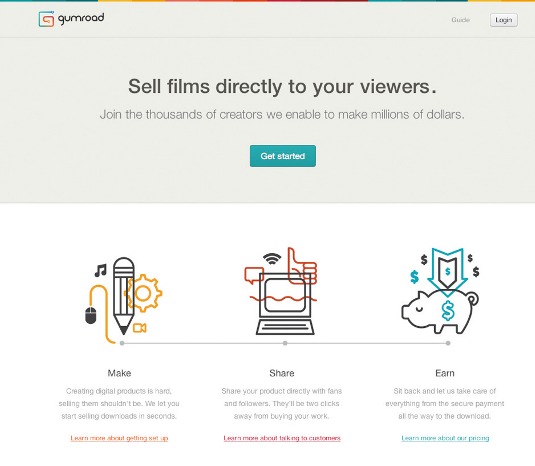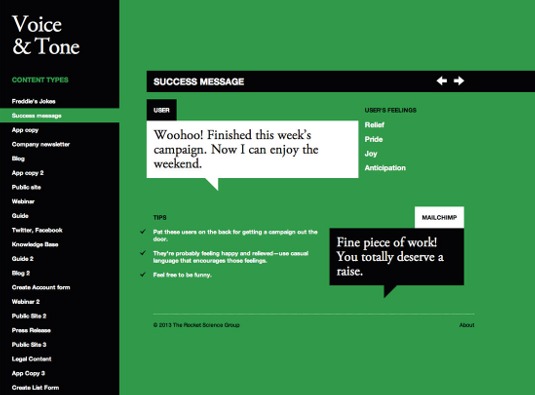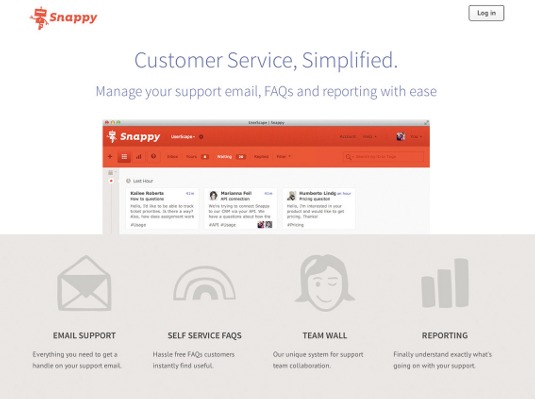14 pro tips for launching your own app
In the runup to her talk at our Generate event, Rachel Andrew explains how to earn extra cash by launching your own digital product.
06. Paying customers are worth more than just the money
It's important to get to people paying you as quickly as possible even if you can survive without the cash. Those real customers will give you far more useful feedback than an army of people who will love your product as long as it is free. You want to be developing the features that are of interest to people who are willing to pay, and aligning your product more closely to that customer.
I recently signed up for the beta of a new metrics application called Trak.io. After entering my email address, I got a message saying that if I wanted to bypass the queue I could do so by paying $19. This is a brilliant way to segment beta users based on who is willing to pay a small charge and who is not, and a way to find that out before the product is really mature enough to start asking for a monthly subscription from users.
07. Create a minimum viable infrastructure
If you are at all familiar with the Lean Startup methodology, then you may have already come across the term 'Minimum Viable Product'.
This is a similar concept to my advice at the beginning of this article, starting with the smallest thing that you can in order to test the market and your assumptions and then develop from there. You can do the same thing with the infrastructure around your product.

Payment can be taken via PayPal or a service such as Stripe, which is now available in the UK. Delivery of downloadable software can be managed via services such as Gumroad. Your documentation and support site can be managed via any number of hosted applications.
It's likely you'll decide to bring some of these services in-house, allowing you to create your own delivery mechanisms, craft a more customised experience and save monthly fees.
However, in order to get quickly in front of customers, these third party services can save you a lot of time.
Daily design news, reviews, how-tos and more, as picked by the editors.
08. Own your own customers and ensure you can export data
While making full use of the services available to you, take care that you are able to keep your own list of customers and purchases or can export that data easily from the systems that you use.
Try to avoid ending up in the situation where you are unable to contact your own customers, or lose purchase history or other information should you move to a different platform.

This can be unavoidable if you need to sell via the Apple App Store or some other closed platform, but if you have a choice always ensure you have access to this data.
If you're currently working on your product, you need to also set time aside to start building an audience. A successful launch day will only happen if people are already excited about the product...
09. Set up a holding page and email signup
For Perch, we put a holding page online about a month prior to launch. We made a video showing the UI and basic functionality and added a signup box for people to express interest. Just over 500 people signed up and from that initial email to the list, which contained a special offer code, we had paid for everything that we had spent on Perch to date within 24 hours.
As soon as you can, get a holding page online for your product and start promoting it. Your holding page can be as simple as a form that adds people to an email list at MailChimp or Campaign Monitor.
Having an incentive for signing up can encourage people to give you their email address. For example, the offer of a launch day discount, or a free chapter in the case of an ebook.
10. Create content that's of interest to the people who will buy your product
Before and after launch, if you can provide valuable information to the very same people who would buy your product or sign up for your service then it will help bring customers to you.
If your product is aimed at web designers, write articles and blog posts that are of interest to web designers. They don't need to directly refer to the pain point your product solves, as long as they bring the ideal customers to your site and causes them to be interested enough to learn about what you do.
This is where choosing to launch a product that ties in to your own industry or an interest you already have is key.

It's easy for me to write articles that appeal to web designers as I've been writing for that market for over ten years, and working with designers as a developer for longer. It would be much harder had I created a product for a market I had no real knowledge of other than a problem I thought I could solve.
Content marketing is a key way to promote your products if you've got limited funds. Good content will not only index well in search engines but will also be shared by people if it really brings value in itself and isn't purely marketing.
For writing ideas, look at the sort of questions people in your target market are asking on Twitter or Facebook. Simple posts answering a common problem or reviewing various solutions are a good place to start. Once you start collecting ideas, you'll find spotting potential topics becomes easier.
Next: more pro tips to help launch your digital product
See Rachel speak at Generate: buy your ticket today

The Creative Bloq team is made up of a group of art and design enthusiasts, and has changed and evolved since Creative Bloq began back in 2012. The current website team consists of eight full-time members of staff: Editor Georgia Coggan, Deputy Editor Rosie Hilder, Ecommerce Editor Beren Neale, Senior News Editor Daniel Piper, Editor, Digital Art and 3D Ian Dean, Tech Reviews Editor Erlingur Einarsson, Ecommerce Writer Beth Nicholls and Staff Writer Natalie Fear, as well as a roster of freelancers from around the world. The ImagineFX magazine team also pitch in, ensuring that content from leading digital art publication ImagineFX is represented on Creative Bloq.
